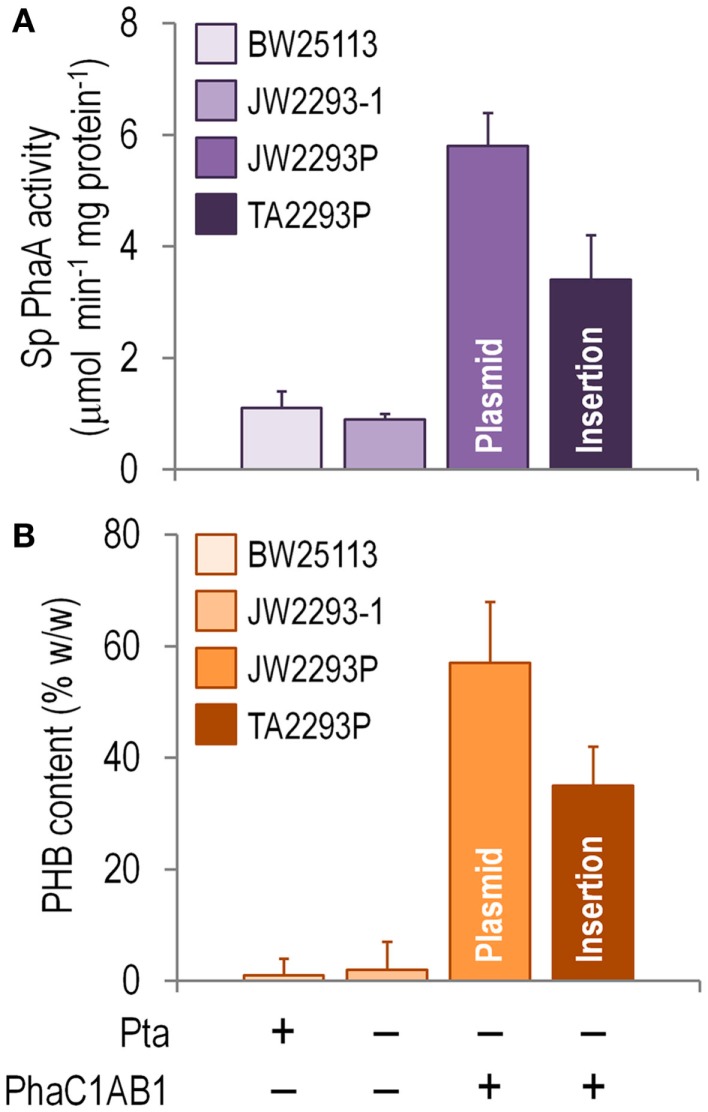Figure 4.
Biochemical characterization of E. coli TA2293P as a microbial cell factory for PHB synthesis. (A) In vitro determination of the specific (Sp) 3-ketoacyl-coenzyme A thiolase (PhaA) activity. Cells were harvested after growing them for 24 h in M9 minimal medium added with 30 g l−1 glucose as the sole carbon source, and the activity of PhaA was determined in the cell-free extract as detailed in the Section “Materials and Methods.” (B) Poly(3-hydroxybutyrate) (PHB) accumulation. The PHB content (expressed as a percentage of the cell dry weight) was assessed by flow cytometry after growing the cells for 24 h in M9 minimal medium added with 30 g l−1 glucose as the sole carbon source. In all cases, each bar represents the mean value of the corresponding enzymatic activity ± SD of triplicate measurements from at least two independent experiments. The strains used to explore these biochemical traits were E. coli BW25113 (wild-type strain), E. coli JW2293-1 (Δpta), E. coli JW2293P (Δpta, carrying the phaC1AB1 gene cluster in a multi-copy plasmid), and E. coli TA2293P [Δpta, ykgH:mini-Tn5(phaC1AB1)]. See Table 1 for further details about the genotype of each E. coli strain. The relevant features of each strain are indicated at the bottom of the figure.

